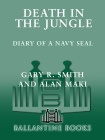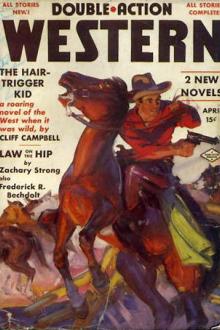Death in the Jungle by Gary Smith (most inspirational books .txt) 📕

Read free book «Death in the Jungle by Gary Smith (most inspirational books .txt) 📕» - read online or download for free at americanlibrarybooks.com
- Author: Gary Smith
Read book online «Death in the Jungle by Gary Smith (most inspirational books .txt) 📕». Author - Gary Smith
In March ’66, all four UDT-12 platoons began the biannual Team Olympics, two weeks of operational competition between the platoons. We had a long ocean swim, underwater mine search, beach reconnaissance, parachute accuracy test, long-distance foot race, obstacle course race, timed breath-holding while sitting and while swimming underwater, inland demolition raids, and a variety of administrative, communications, and operational skills tests.
Fourth Platoon won the title. We had the privilege and honor to represent our command during its annual ORI (Operational Readiness Inspection) by the NOSG (Naval Operations Support Group) staff. We spent the next two weeks jumping out of airplanes, diving, demonstrating demolitions, undertaking demolition raids on San Clemente Island, drawing hydrographic charts, et cetera. All went well, with UDT-12 receiving a grade of excellent and a letter to the CO and men for a job well done.
In June ’66, six of us were finally sent to Fort Benning, Georgia, to Jump School. Generally, everyone was anxious to go because once we’d graduated, we would receive a second additional fifty-five dollars a month for hazardous duty pay. Because we were divers and worked with demolitions, we were already receiving the first additional fifty-five dollars a month.
The biggest mistake I made at Fort Benning was letting a Marine Force Recon guy give me a Mohawk haircut. It was my idea and his workmanship. All went well concerning my new look during our individual inspection the next morning. No comments were made by the instructors until our daily run after PT. Because PO3 Leslie Funk and I were the fastest runners in the thousand-man class, we were given the privilege of running circles around our platoon while it ran in formation. It was during this time that we passed the Commandant of Jump School, a bird colonel.
Seeing me, he yelled, “You, get over here!” I knew I was in big trouble because of the anger in his voice. I quickly ran to him and dropped to the push-up position, yelling, “Airborne, sir.”
Continuing to yell, he spat, “You get out of my school and you get out of here now! And don’t you ever come back!”
I was crushed! I immediately jumped up and started running after my platoon, not knowing what else to do. All I could think of was that I would be the first man in UDT to get kicked out of Jump School. Man, you’ve really done it now! I thought.
The platoon had a big black sergeant running with us. He motioned for me to come over to him. I ran near to him and dropped to the lean and rest, yelling, “Airborne, Sergeant!”
“Go over to OCS (Officers Candidate School) and get a haircut,” he instructed. “When you’re done, come on back and keep your mouth shut.”
I was sure thankful that I had a friend in that sergeant! After I got my haircut and returned to the platoon, I kept my mouth closed for the remainder of the time I was at Fort Benning. I was beginning to understand the wisdom of being slow to speak, slow to anger, quick to listen, and never again to get another Mohawk haircut.
On 22 August 1966, all of UDT-12 departed for Subic Bay, Philippines aboard a Navy C-117, where we relieved UDT-11. We arrived at Naval Air Station (NAS) Cubi Point late on 24 August. Fourth Platoon consisted of the following personnel: ENS John Odusch, Chief Ed Reynolds, Bosn Joe Thrift, “R. E.” Saillant, “Moki” Martin, George Nunez, Ben Azeredo, Lou DiCroce, Alex Verduzco, Jim Girardin, Leroy Ray, and Gary Smith.
Shortly after we arrived, 4th Platoon was notified that we would board the USS Diachenko (APD 123) the next morning at 0800 hours and head for Vietnam. Until then, we were granted Cinderella liberty (liberty that was canceled at midnight) and told to muster NLT (no later than) 0600 hours at the team area near the enlisted barracks.
The next day I was riding my first “gray ghost.” The USS Diachenko had originally been a DE (Destroyer Escort) during World War II.
PO1 R. E. Saillant (Fourth Platoon) had been aboard the Diachenko during the Korean conflict with UDT-12. He commented, “The only thing that has been changed or added is the air conditioning.” The racks were of canvas with aluminum tube rims. They were to be triced up from reveille at 0600 hours till taps at 2200 hours.
Once we reached South Vietnam, we began hydrographic reconnaissance of beaches from the Cambodian border to the Tan Phu Peninsula of Kien Hoa province. Hydrographic reconnaissance was conducted to get an accurate map of the bottom of the ocean along the shore, wherever the possibility of an amphibious landing existed. After the tragedy of Tarawa in World War II, where the landing crafts were grounded on uncharted reefs and where many Marines were shot to pieces and drowned in deep tidal pools, the Navy perfected the procedures of creating hydrographic charts by two methods: 1) combat reconnaissance with UDT swimmers; the UDT reconnaissance of an enemy-held beach was usually completed the night before the amphibious landing with the combat demolition of the obstacles at predawn; and 2) administrative reconnaissance; usually done after the amphibious landing had taken place, or at any time, to gather hydrographic information of any designated beach or area. It was done during the day under secure conditions and was more accurate.
Generally, we were able to perform administrative recons because the U.S. Army Special Forces and their indigenous troops secured the beaches for us. Seldom did we come under fire. Some days we swam for twelve hours or more. Because I was also a cartographer, I had to work on the development of the hydrographic charts after swimming all day. Occasionally, Chief Reynolds would have mercy on me and let me be beach security for a day or so.
On 1 September, we got to go to Singapore for five days’ liberty. I really enjoyed visiting the famous Raffles Hotel, where “Bring ’em Back Alive” Frank Buck used to stay





Comments (0)